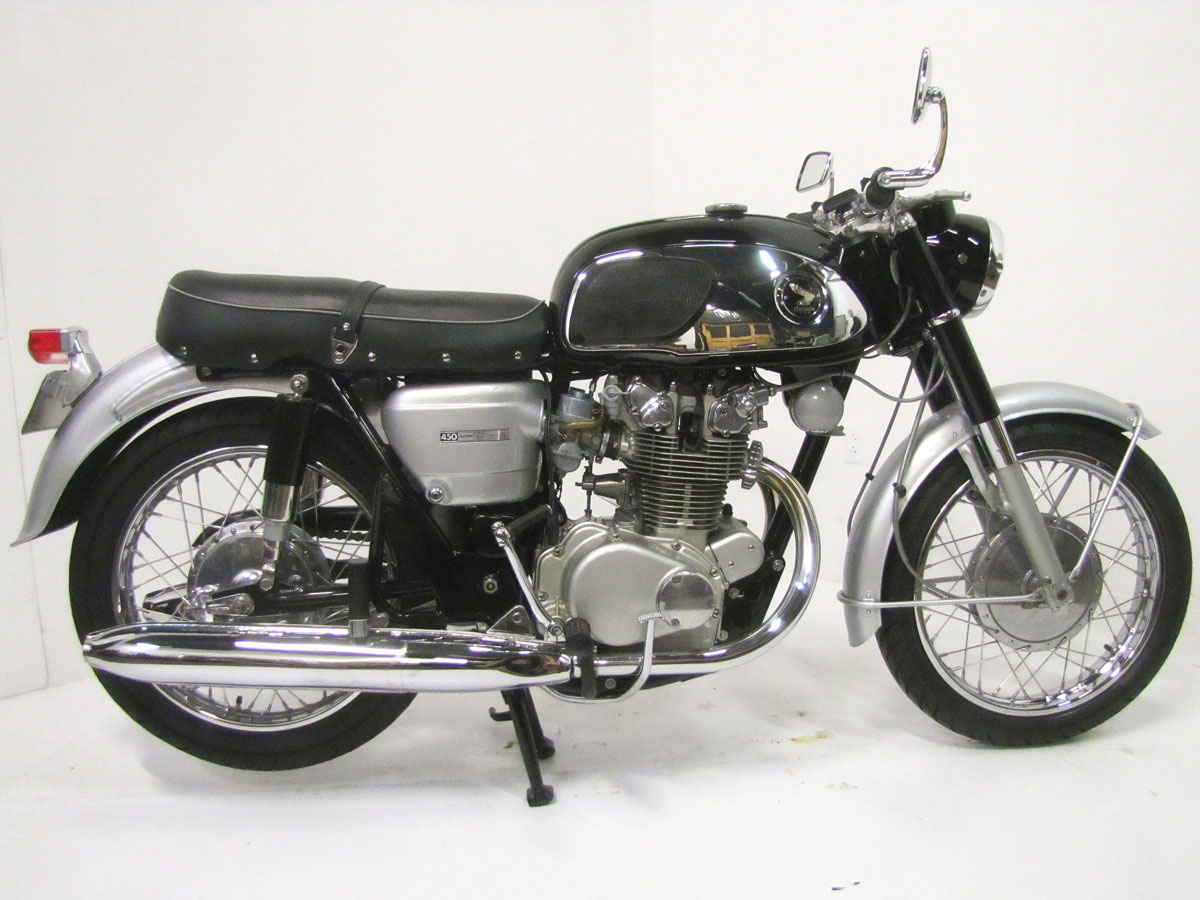
The 1965 Honda CB450 was then a big motorcycle by Japanese standards. Until the mid-1960’s the Japanese makers were sending us 50cc to 250cc bikes, then 300s and 350s. The 450 was unique among most commonly available street bikes in that it had double overhead camshafts and torsion bar valve return, no valve springs per se. About every pure racing engine Honda made in that era, including their GP cars, were DOHC. Most British and American machines were pushrod, side valve or overhead valve machines. They worked fine but made their power under about 7500 RPMs due to the mass of valve train components. Honda was into high RPM designs.
The other “new” thing on the Honda CB450 was the full loop/wishbone frame previously used only on the CL72 and CL77 Scramblers which, uniquely, were lugged frames very much like designs the British built for decades. Most Hondas to this time used the engine as a stressed member, an engineering design which again became popular about 20 years ago with many brands, bikes large and small. The constant velocity carburetors, a design used on British performance cars including Jaguars, were also experimented with on the 450 and there was some success. But Honda published an entire manual just for servicing these carbs. Not widely known, some CB450s of this era were red; tank, frame, chain guard in Honda Scarlet with silver fenders and side covers.
Honda had been flogged for some time for their fuel tank designs. If you are old enough, you may remember ads for aftermarket fiberglass fuel tanks for Honda Super Hawks to eliminate that “unsightly Honda hump!” Though the CB450 was fast and was nicely detailed, its bulbous tank and rather full coverage fenders were not popular and sales were slow. Honda sent kits to US dealers to allow them to swap out all sheet metal and the seat and handlebar for a scrambler appearance. Reworked, the 450 had up pipes on each side and a more stylish fuel tank. Soon Honda got the message and improved the styling, even upgraded the machine with a five-speed gearbox.
Of course today, after decades of the early CB450 styling being ridiculed, it’s the most valuable of the CB450 range which lasted up into the mid-1970’s, even after the fine CB500 Four was launched in 1972. Dubbed the “Black Bomber,” apparently by the British press it’s an interesting piece of Honda history. Also notable is that the parallel twin design has again become popular even in displacements up to 1100ccs.
When you visit the National Motorcycle Museum you can look over this very nicely restored early CB450 in addition to a late 1960’s CL450, both from the John and Jill Parham Collection.
Specifications:
-
- Engine: Four-Stroke Parallel Twin
- Type: Double Overhead Cam, Two Valves per Cylinder
- Bore & Stroke: 70mm x 58mm
- Displacement: 444cc’s
- Compression Ratio: 9 : 1
- Ignition: Battery, Points, Coil
- Carburetors: Two Keihin 32mm CV
- Starting: Electric and Kick
- Horsepower: 45HP
- Primary: Gear Driven
- Clutch: Wet, Multi-Plate
- Final Drive: Chain
- Transmission: 4-Speed
- Frame: Single Down Tube, Steel
- Suspension: Hydraulic Fork / Swingarm, Dual Shocks
- Brakes: Twin Leading Shoe Drum Front / Drum Rear
- Wheelbase: 53 Inches
- Wheels / Tires: 3.25 x 18 / 3.50 x 18
- Weight: 449 Pounds, Wet
- Top Speed: 110 MPH
Leave a Reply
Want to join the discussion?Feel free to contribute!

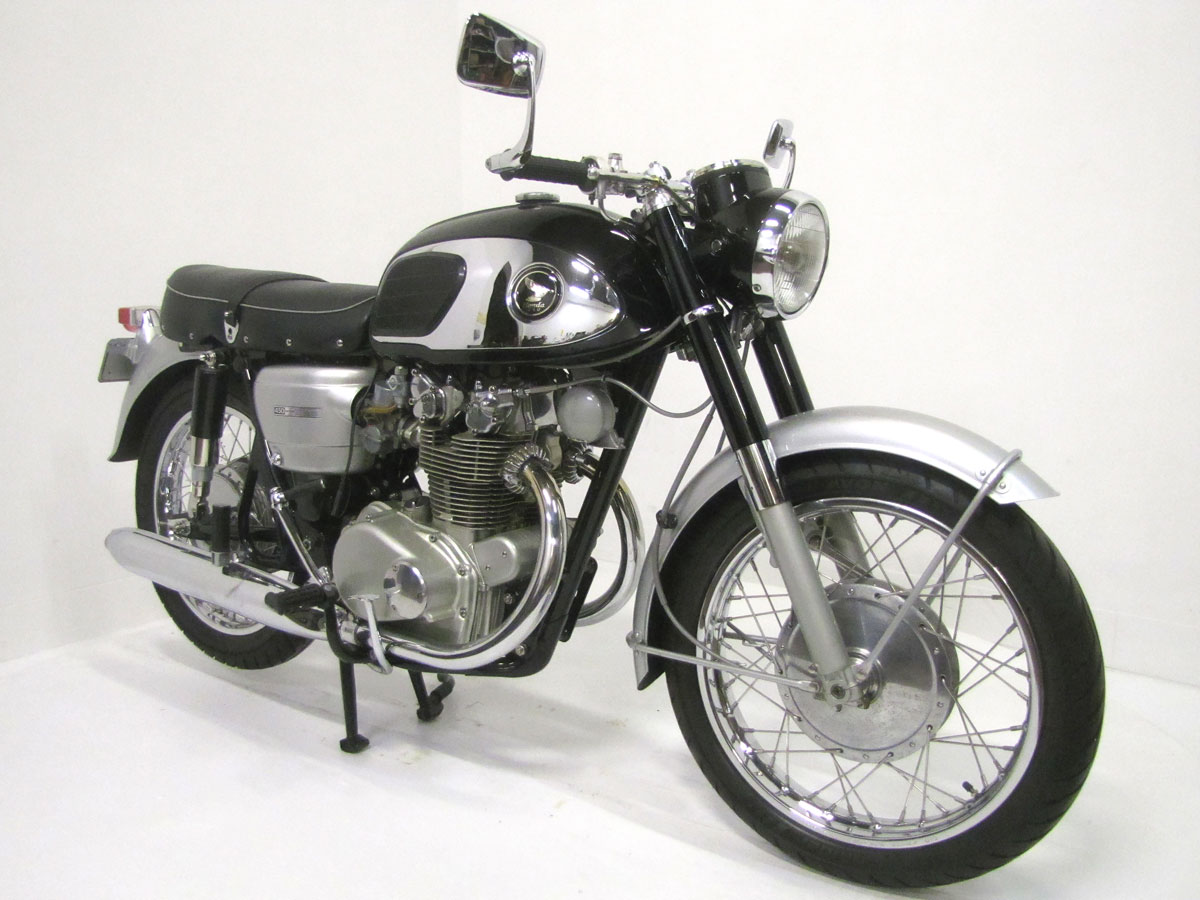
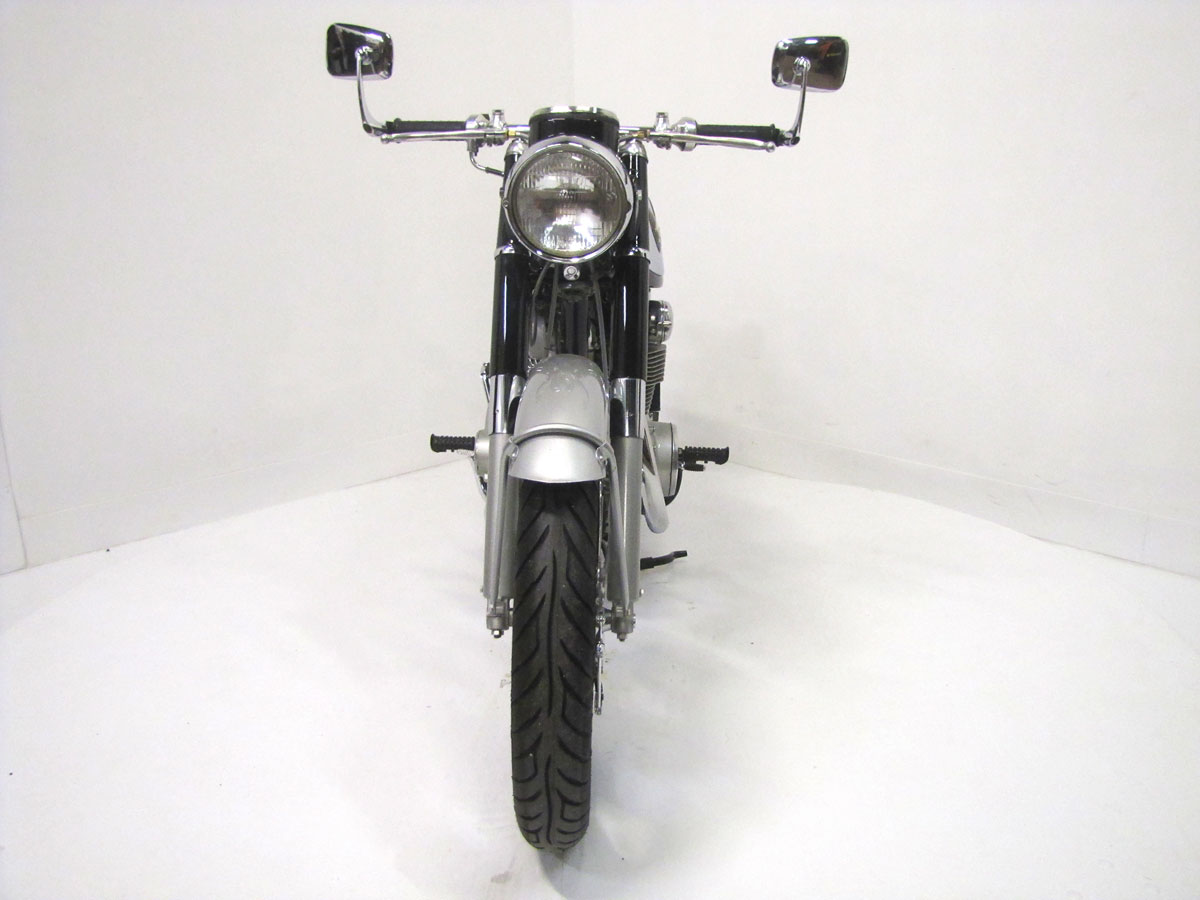
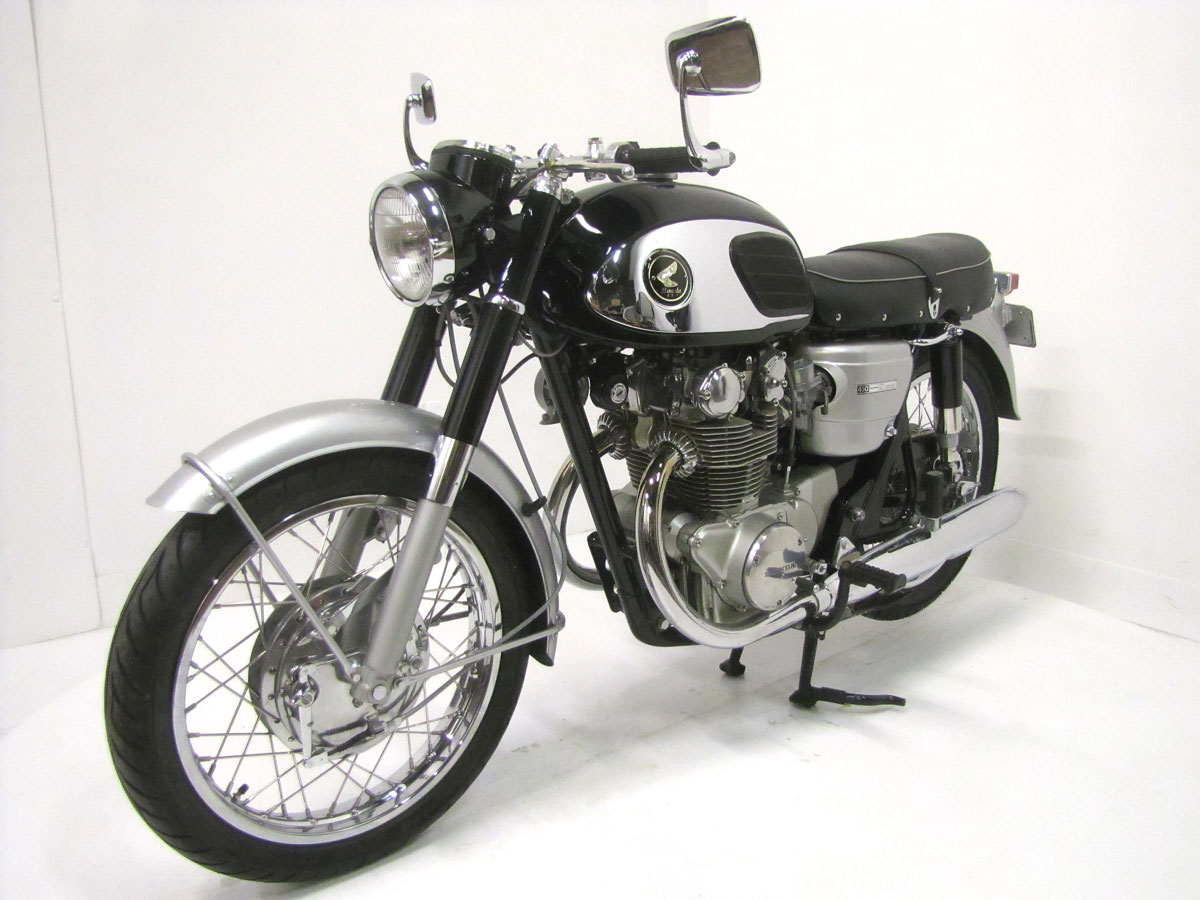
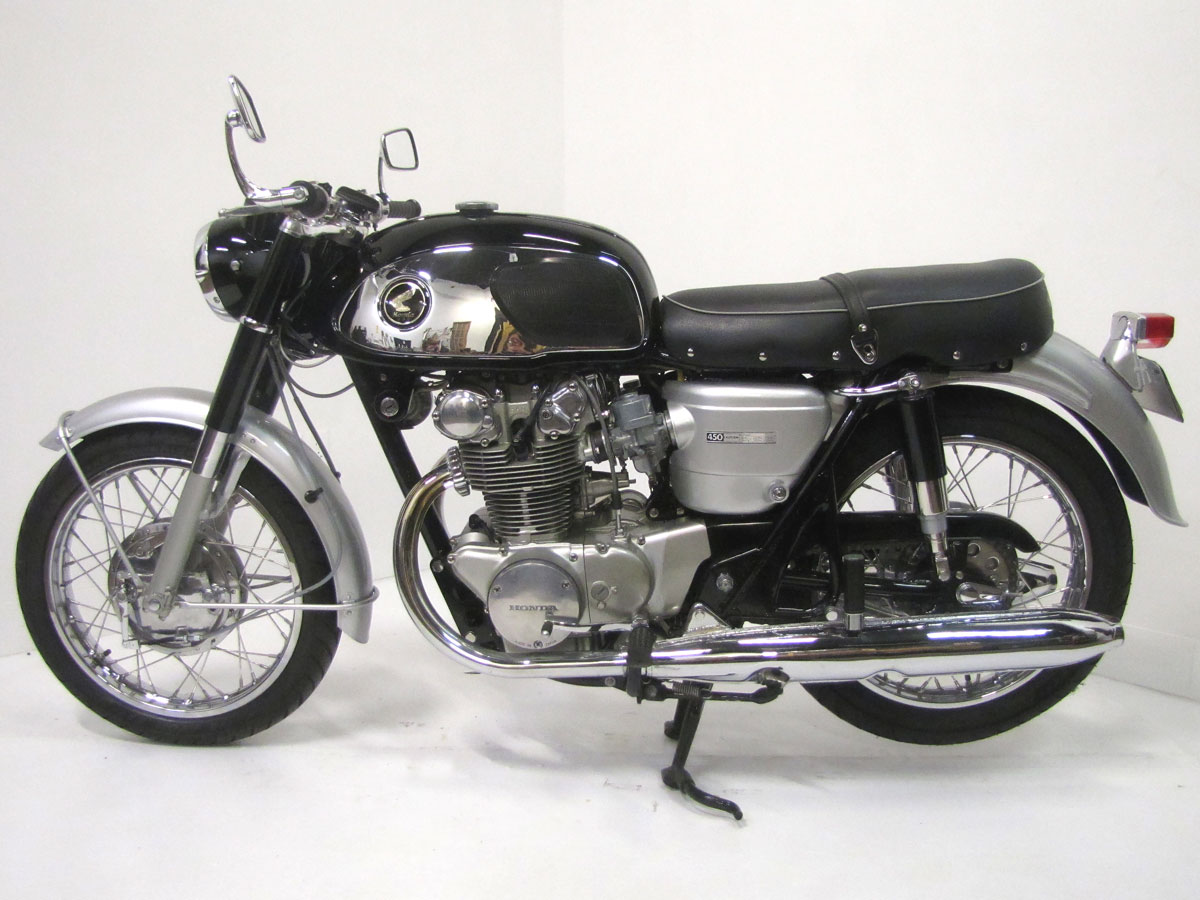
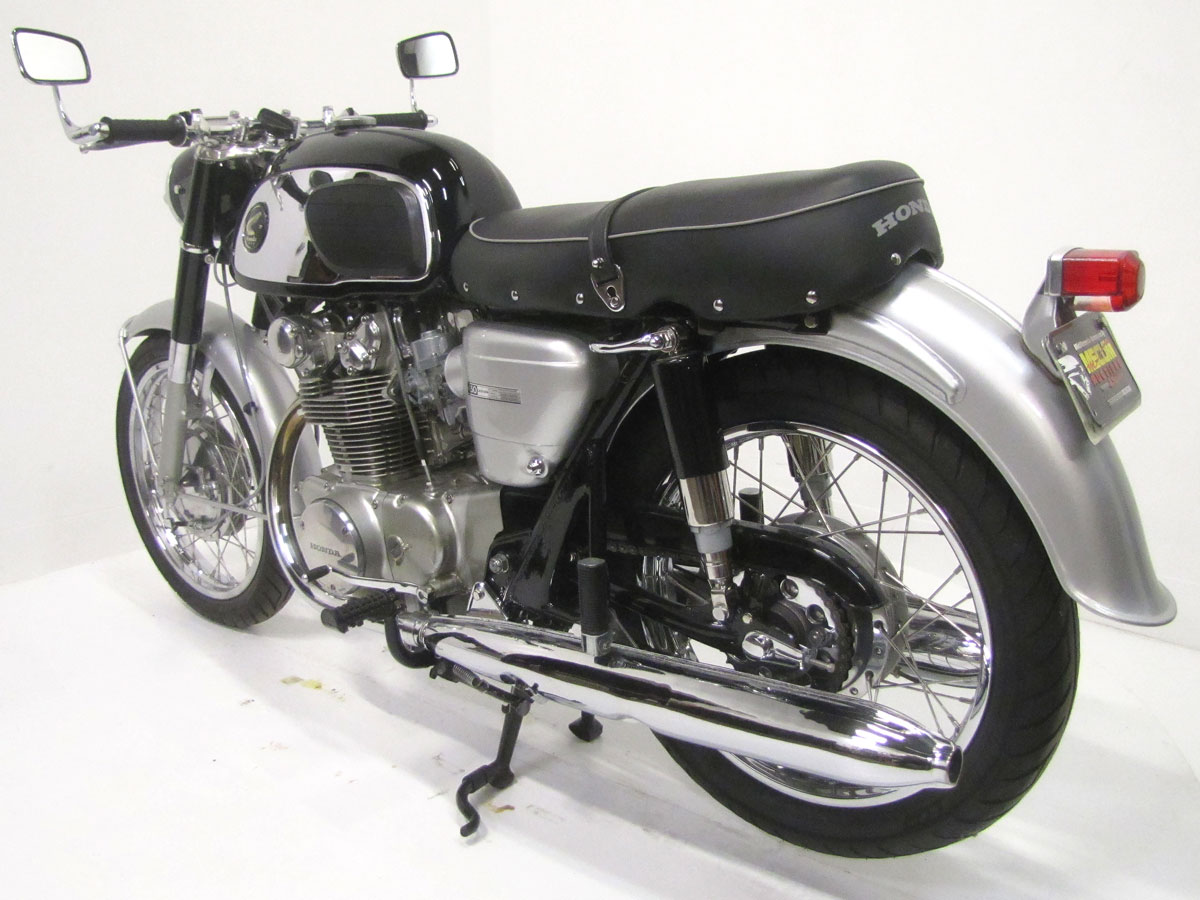
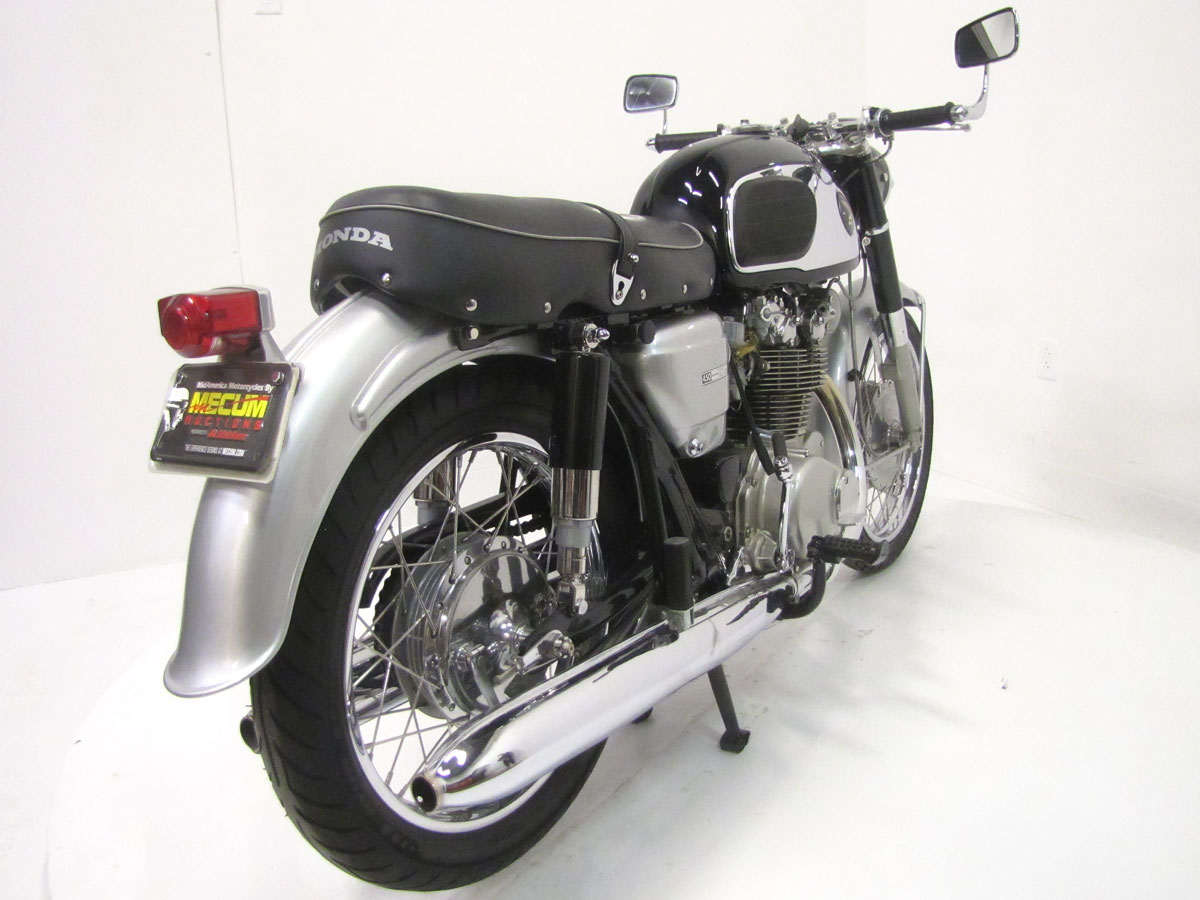
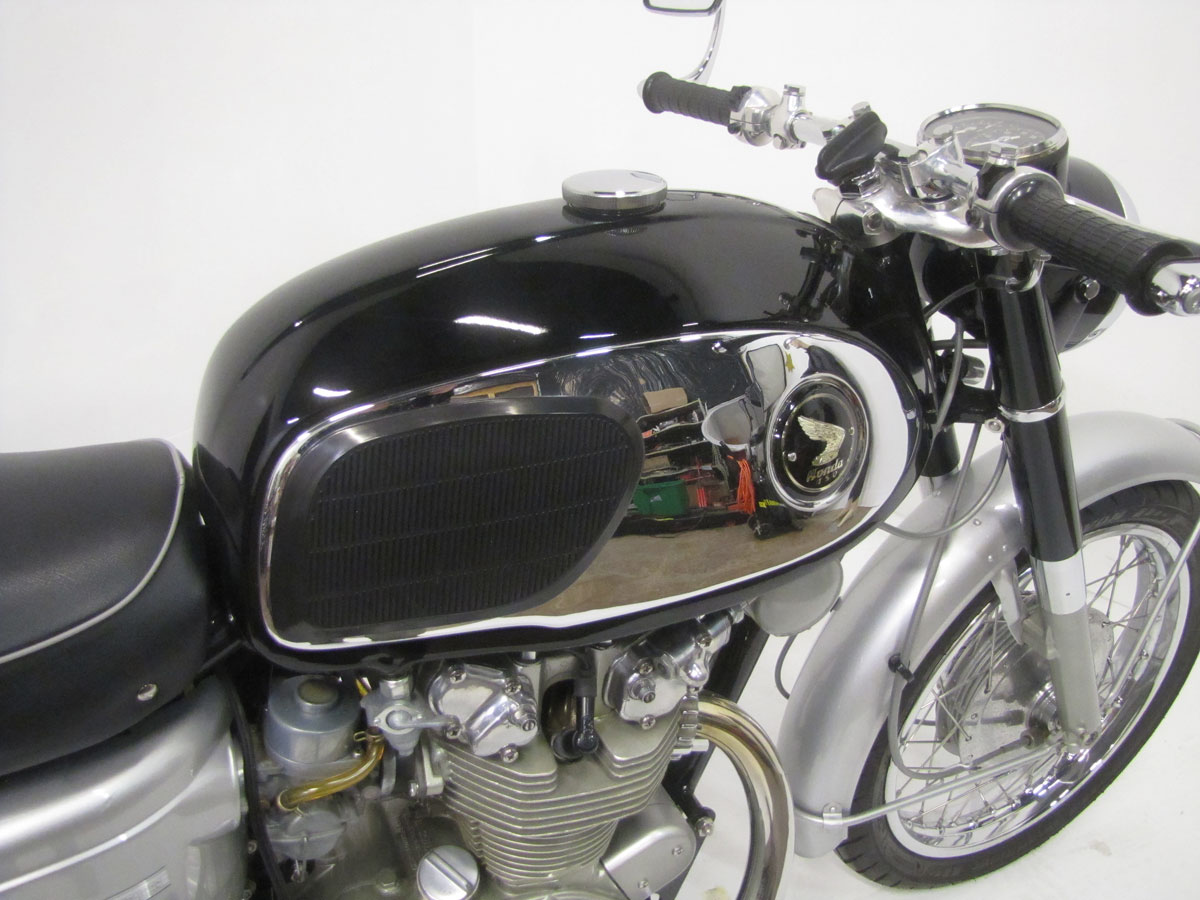
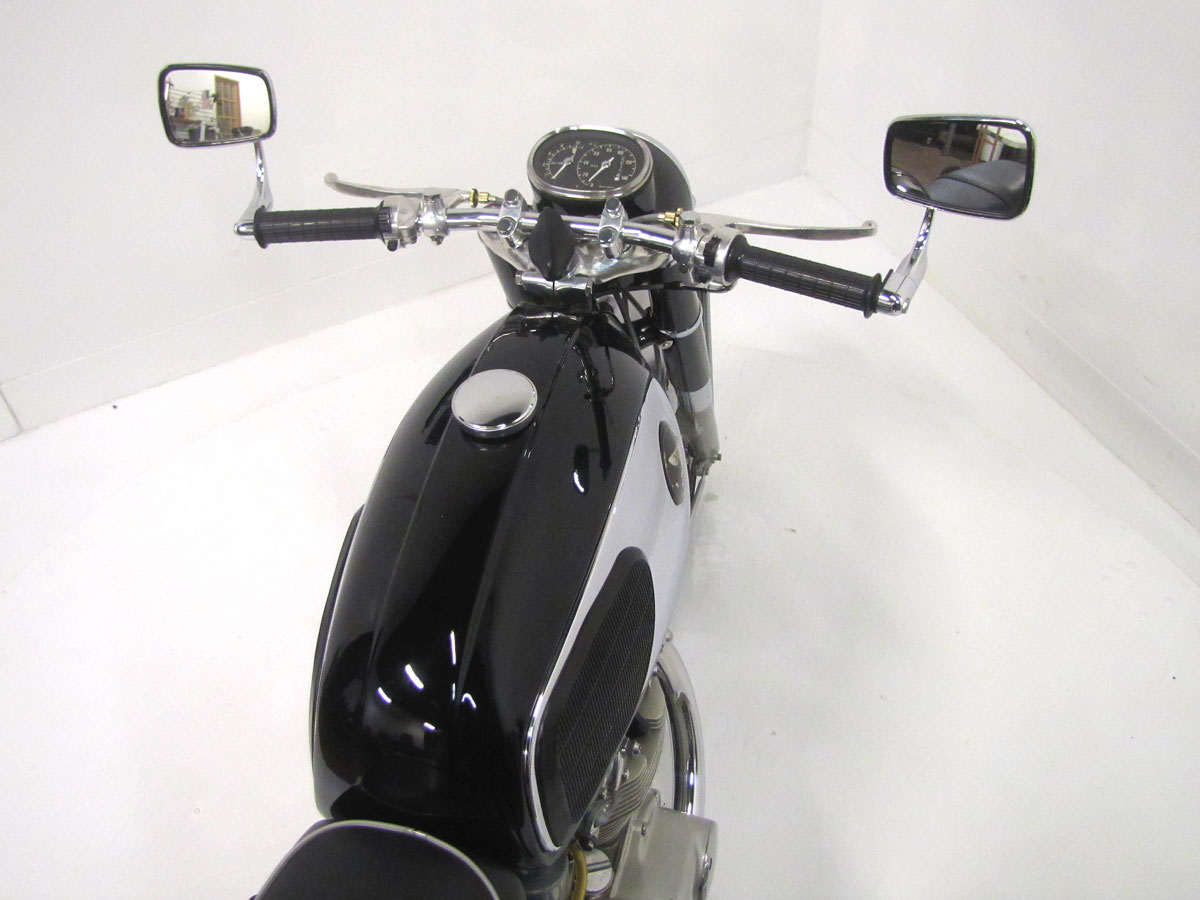
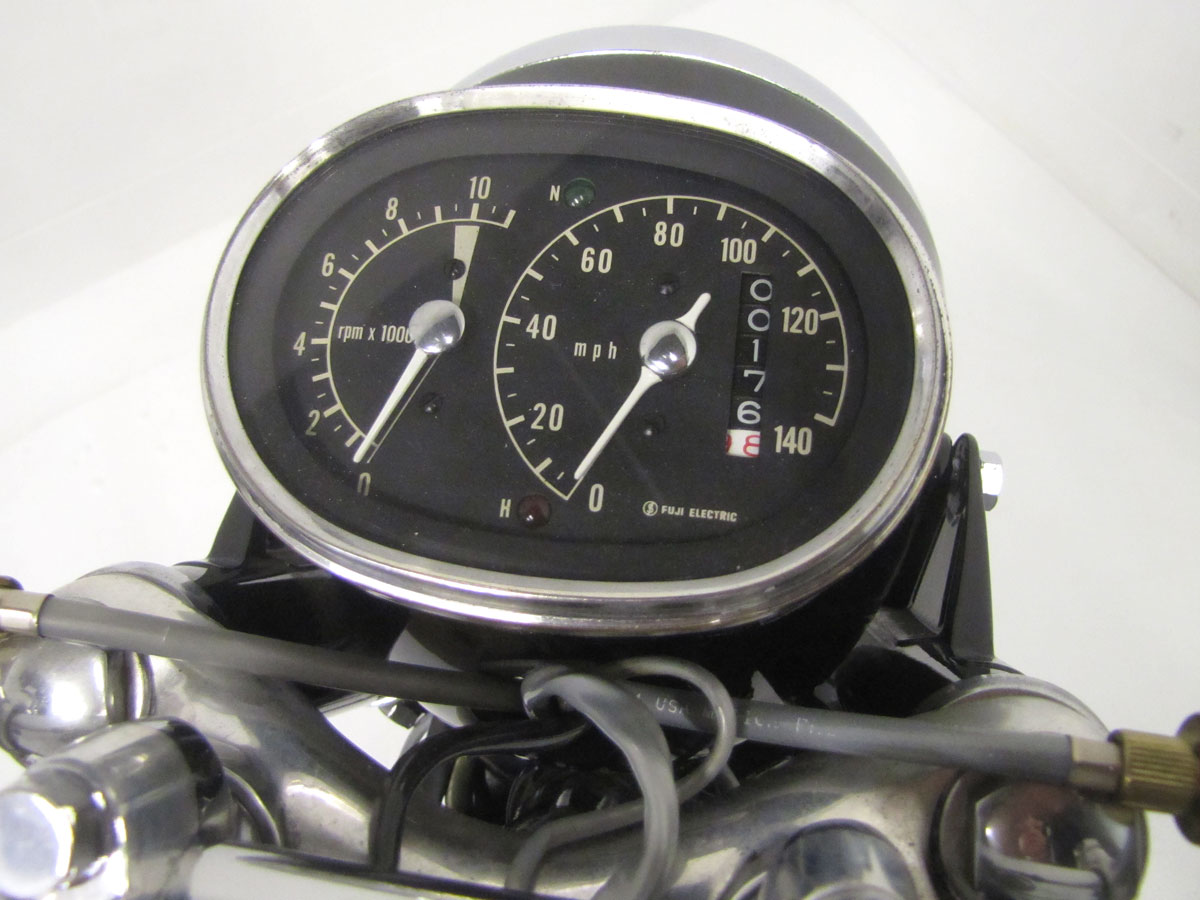
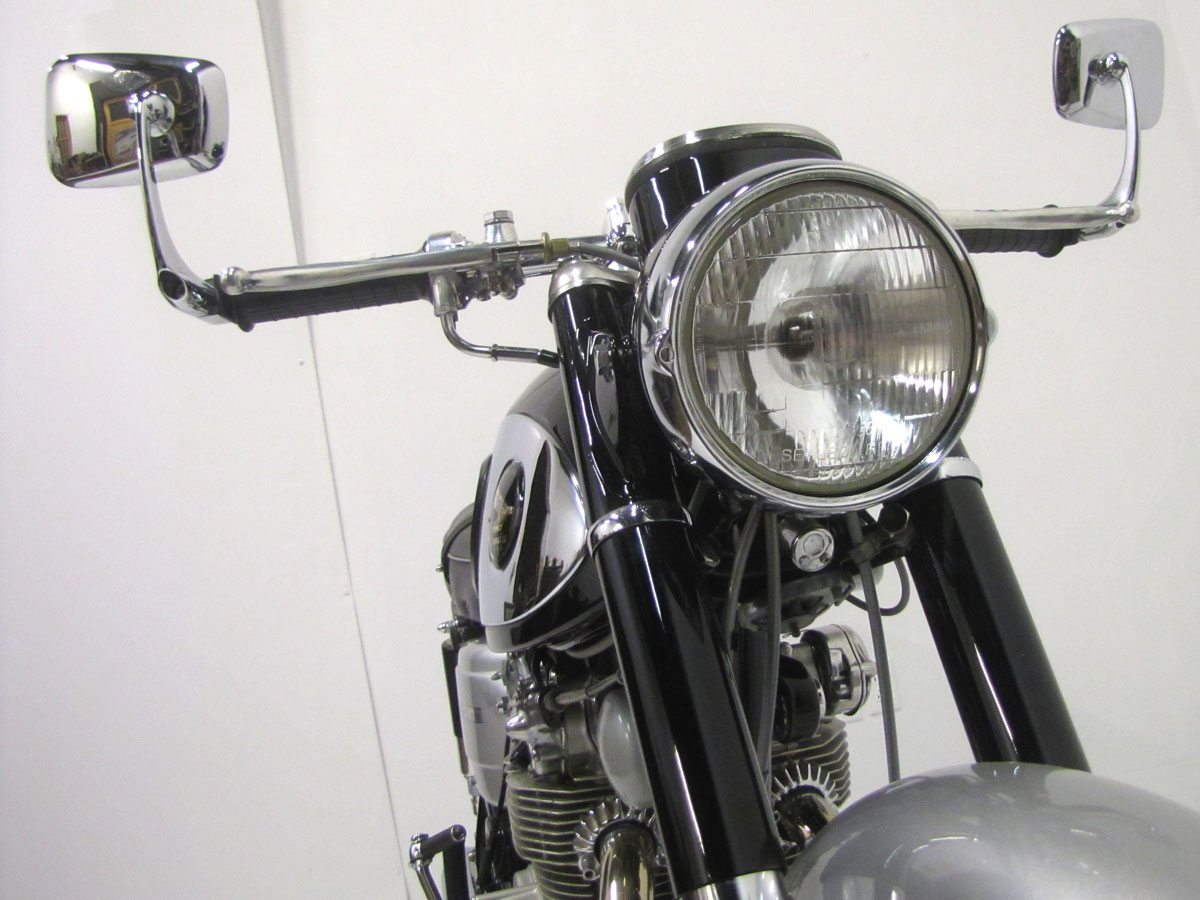
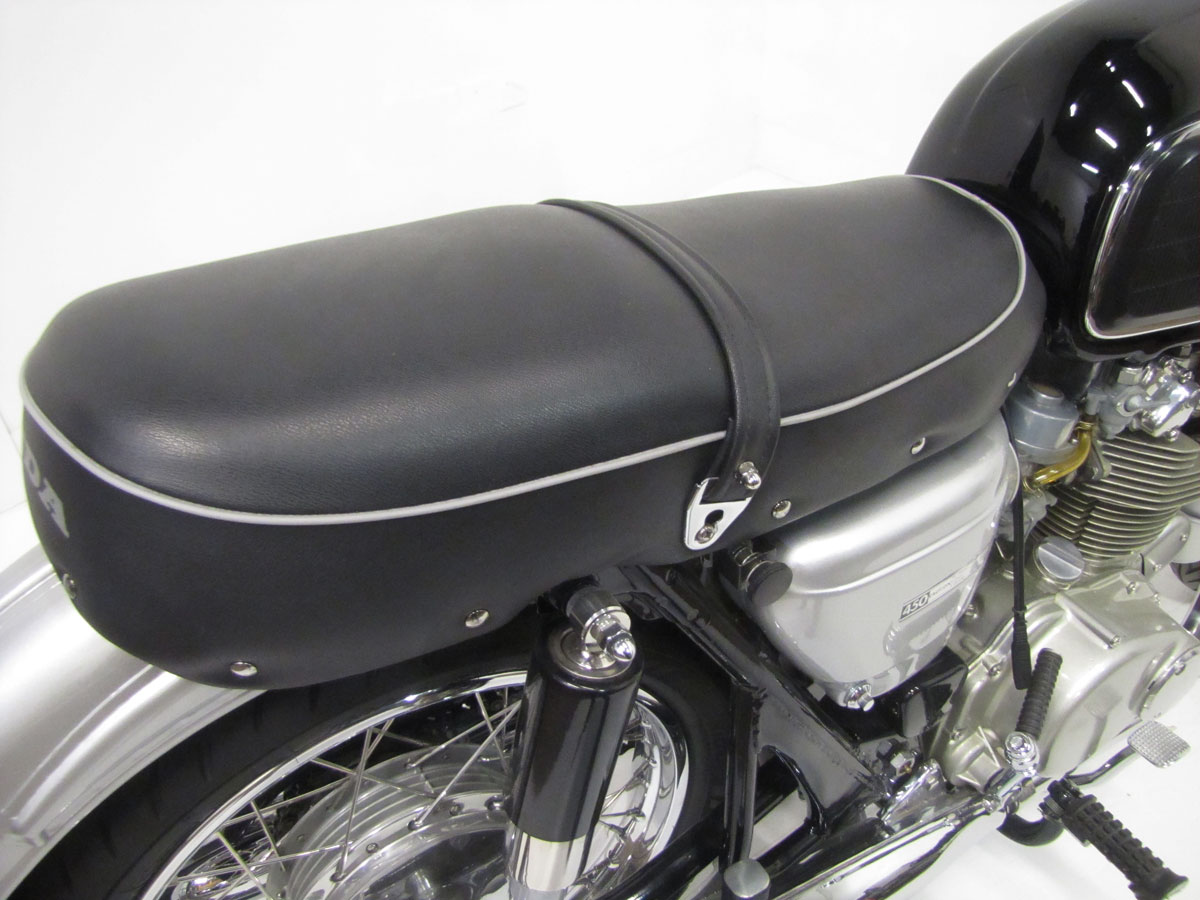
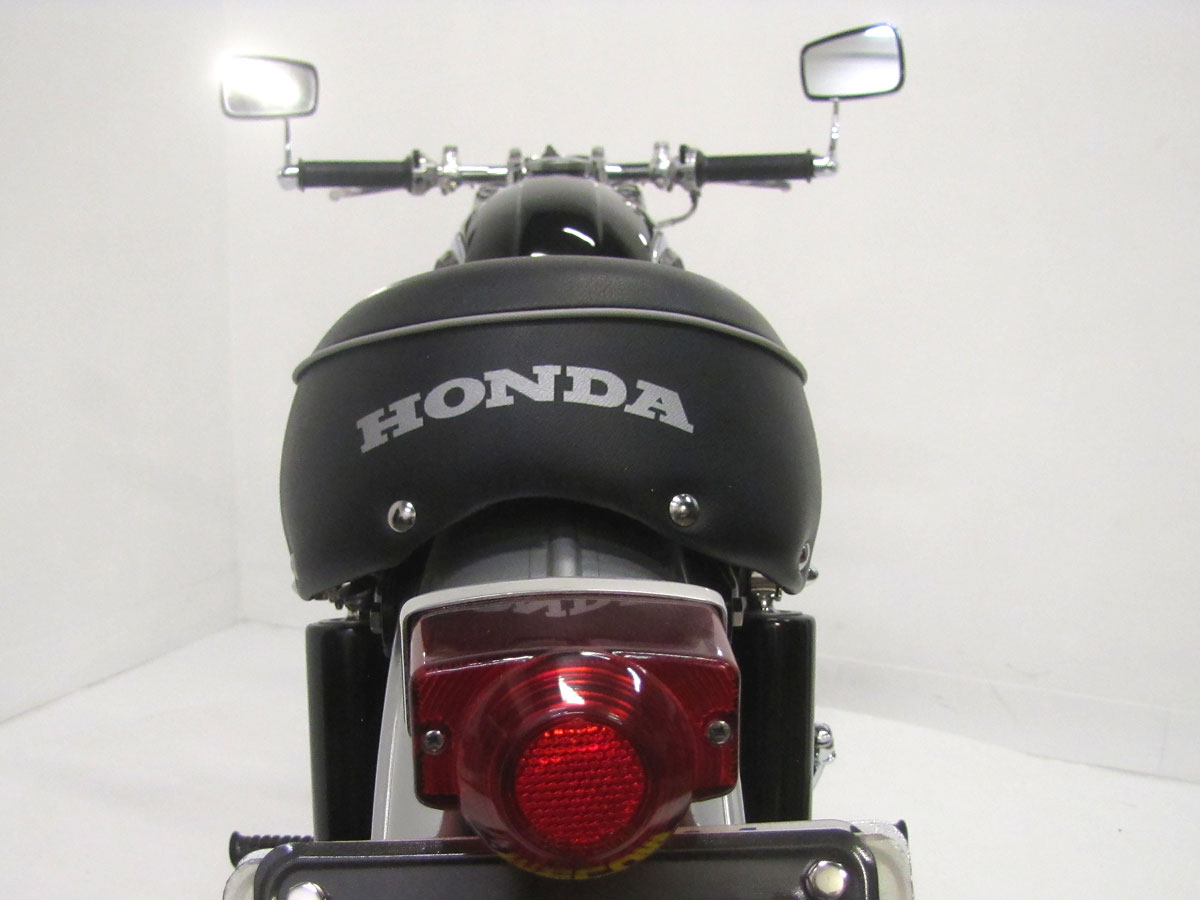
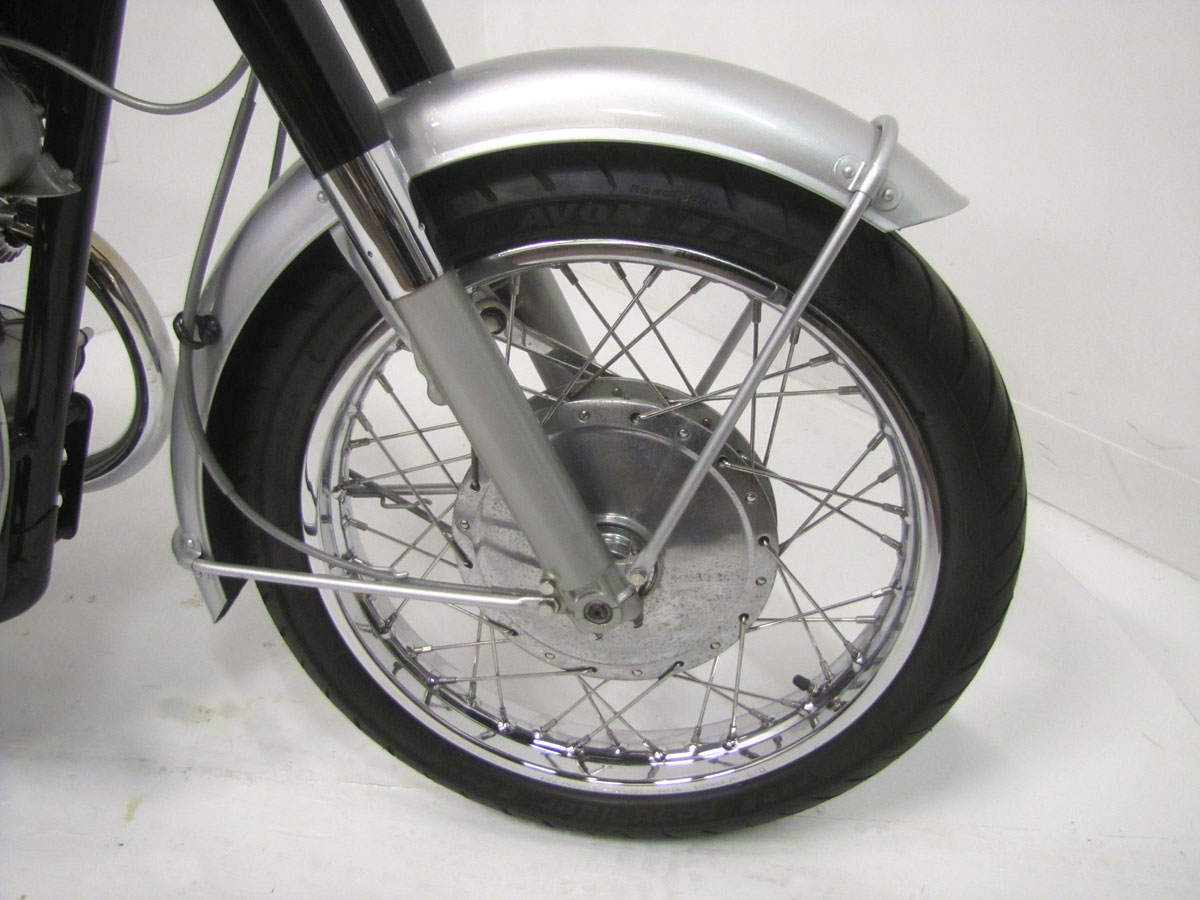
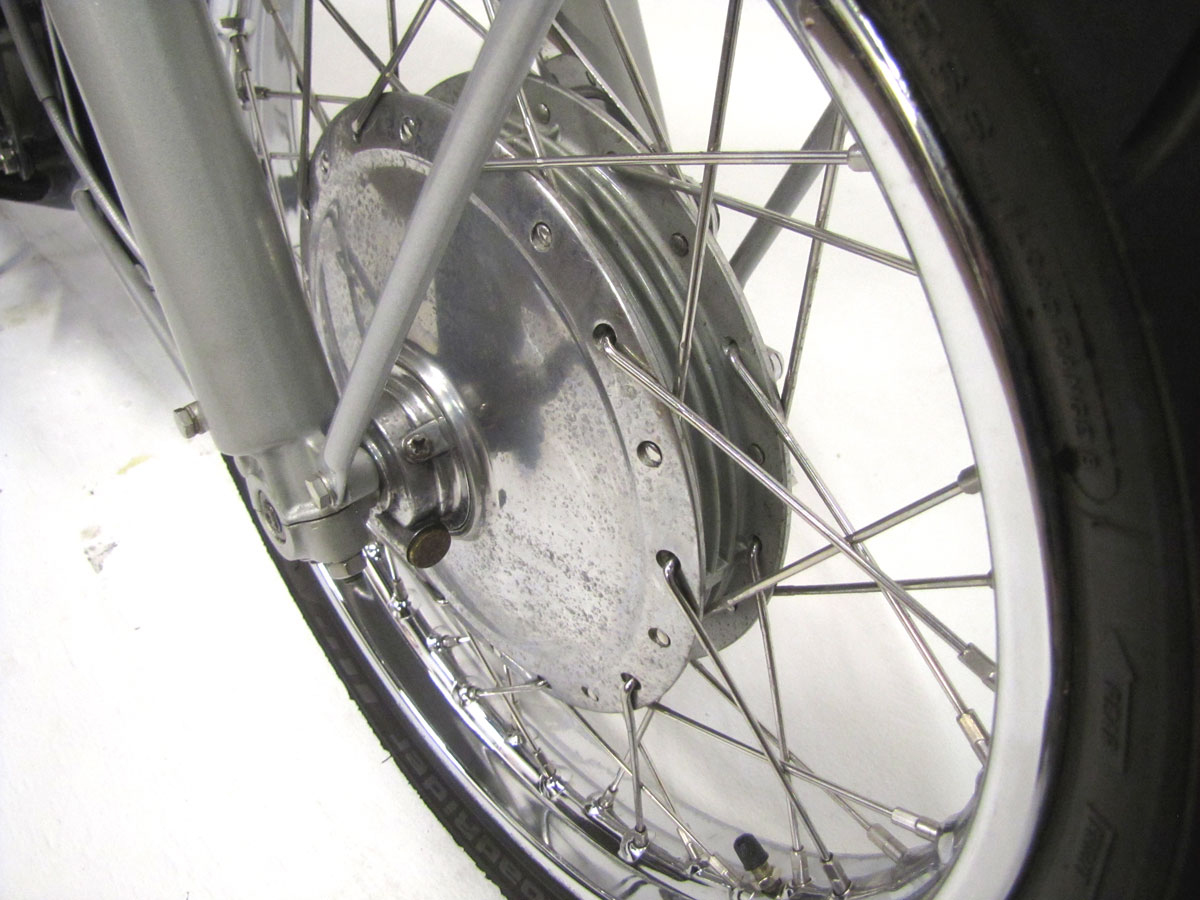
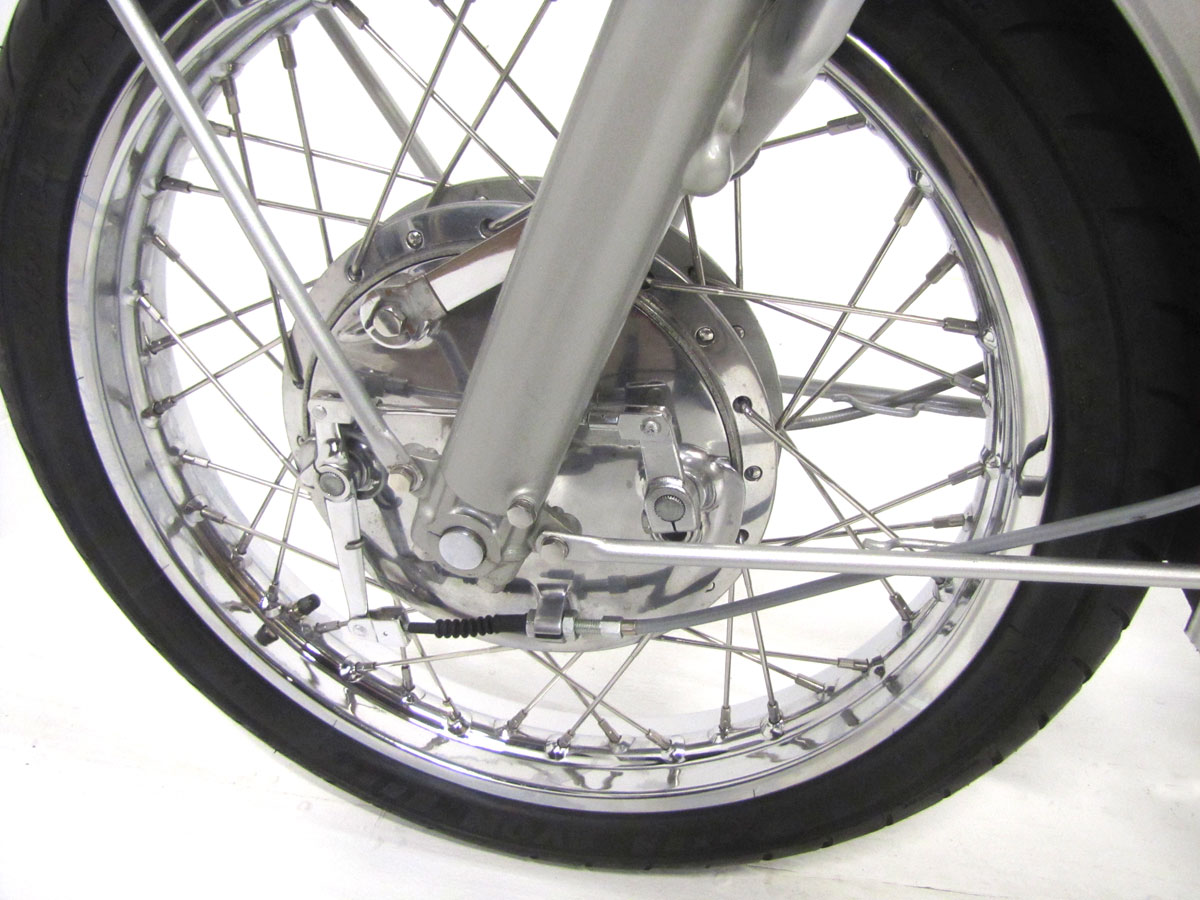
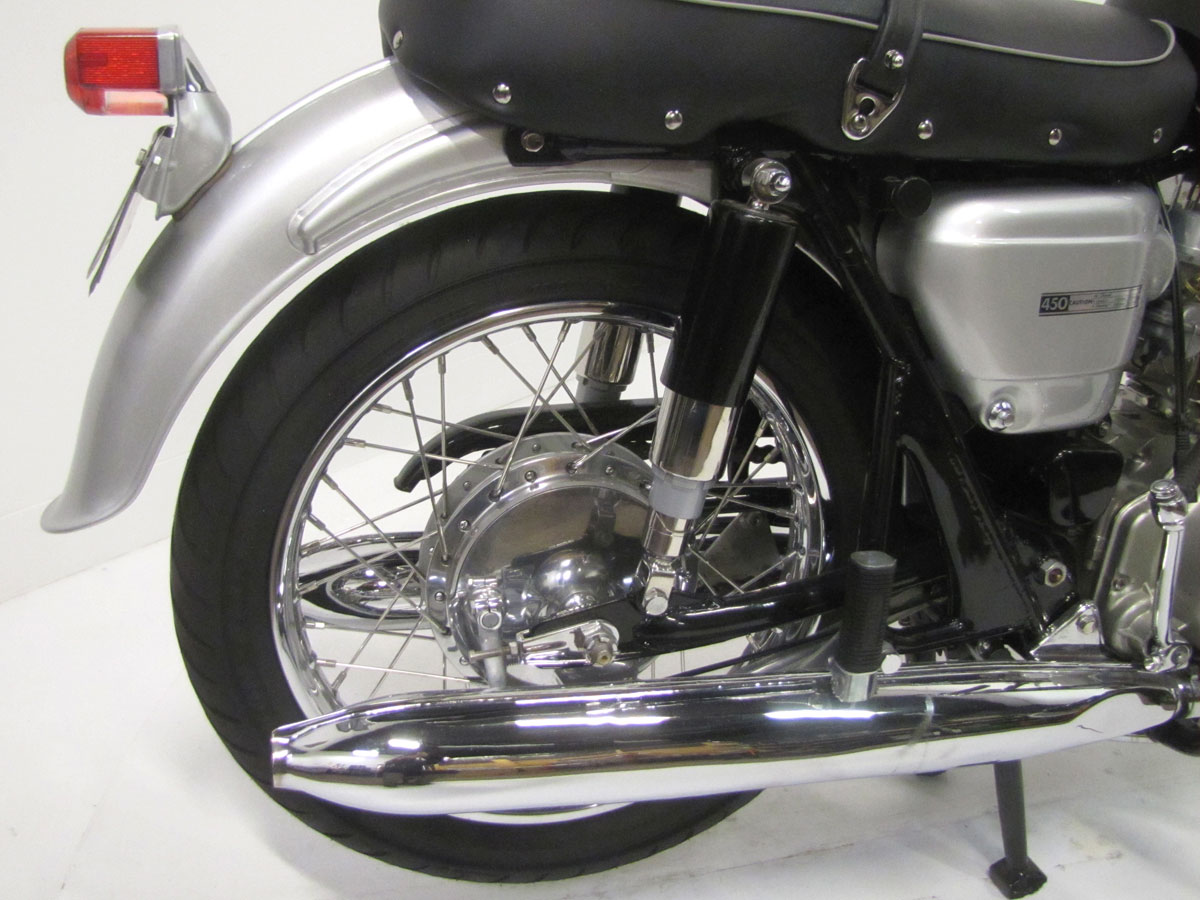
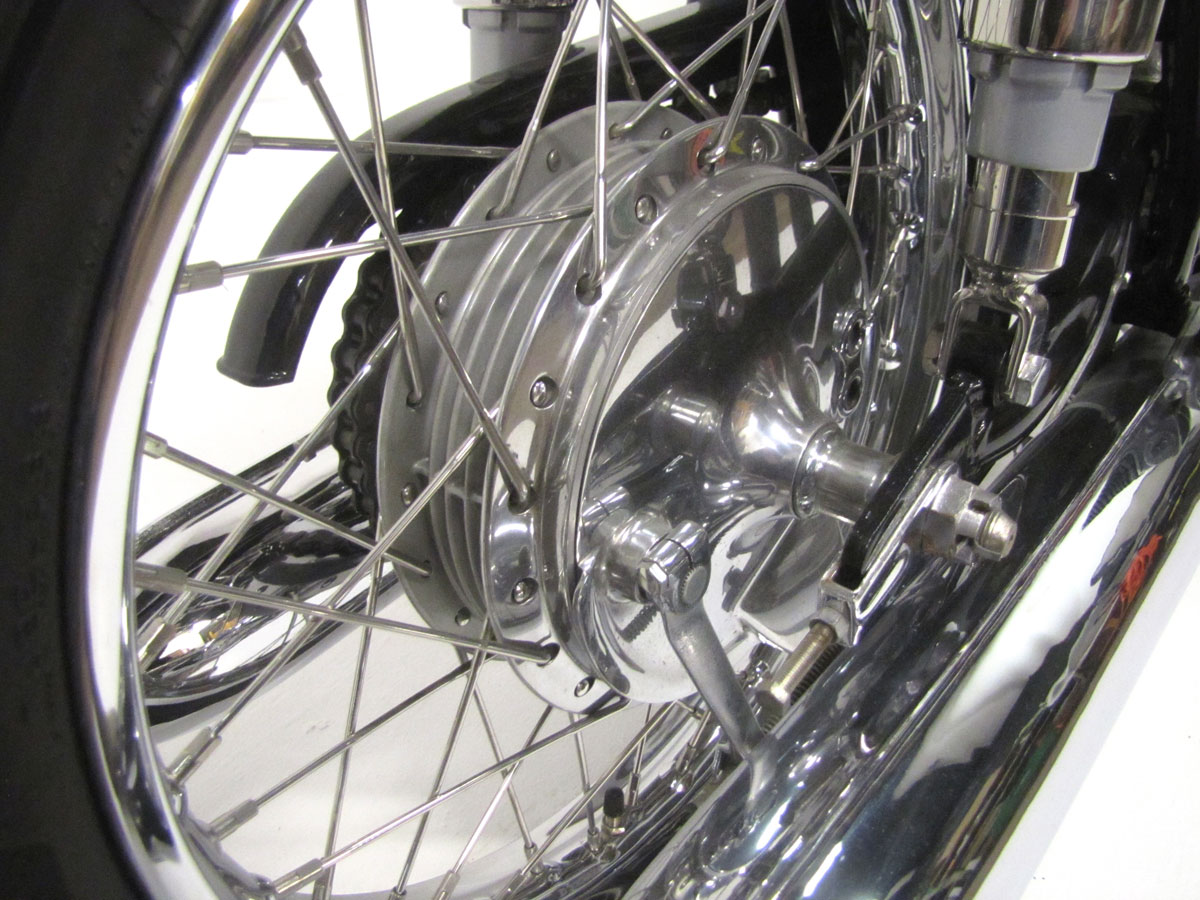
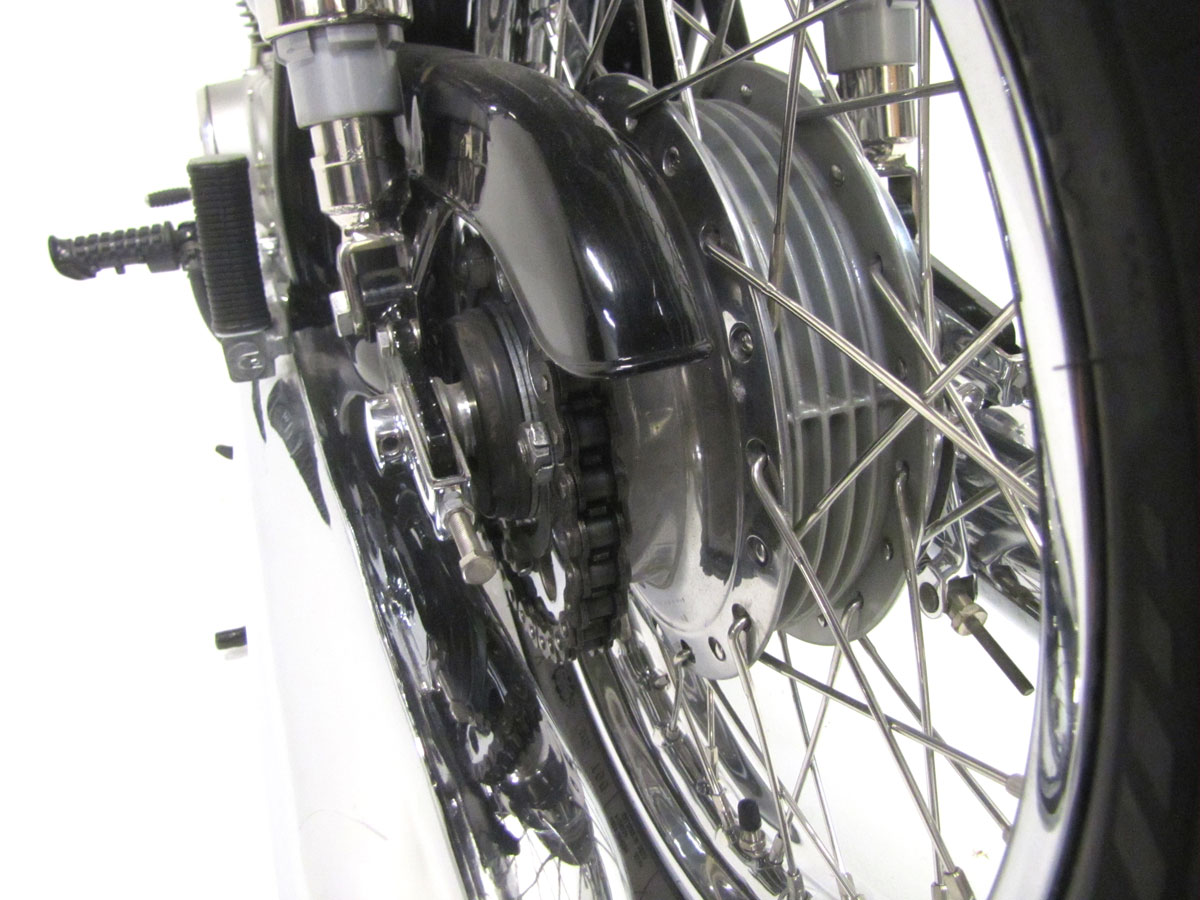
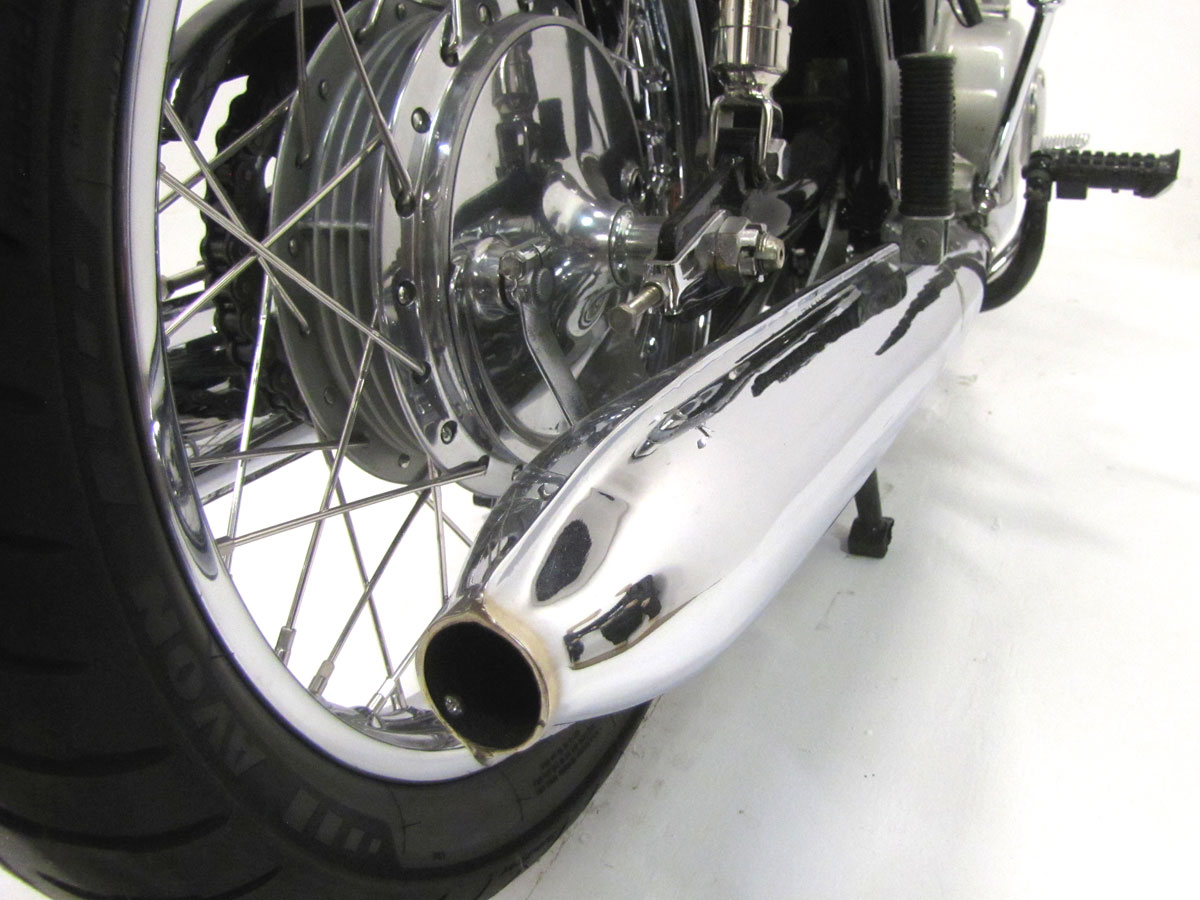
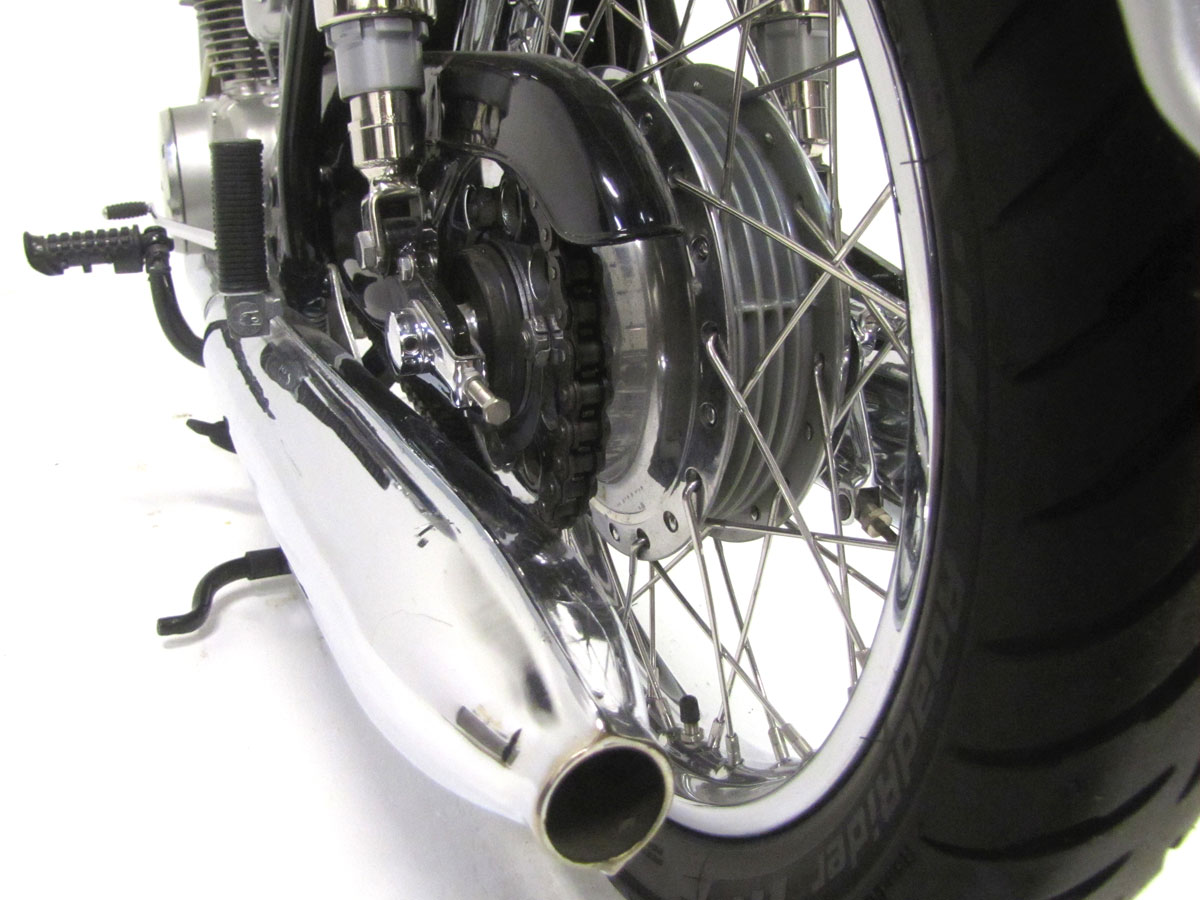
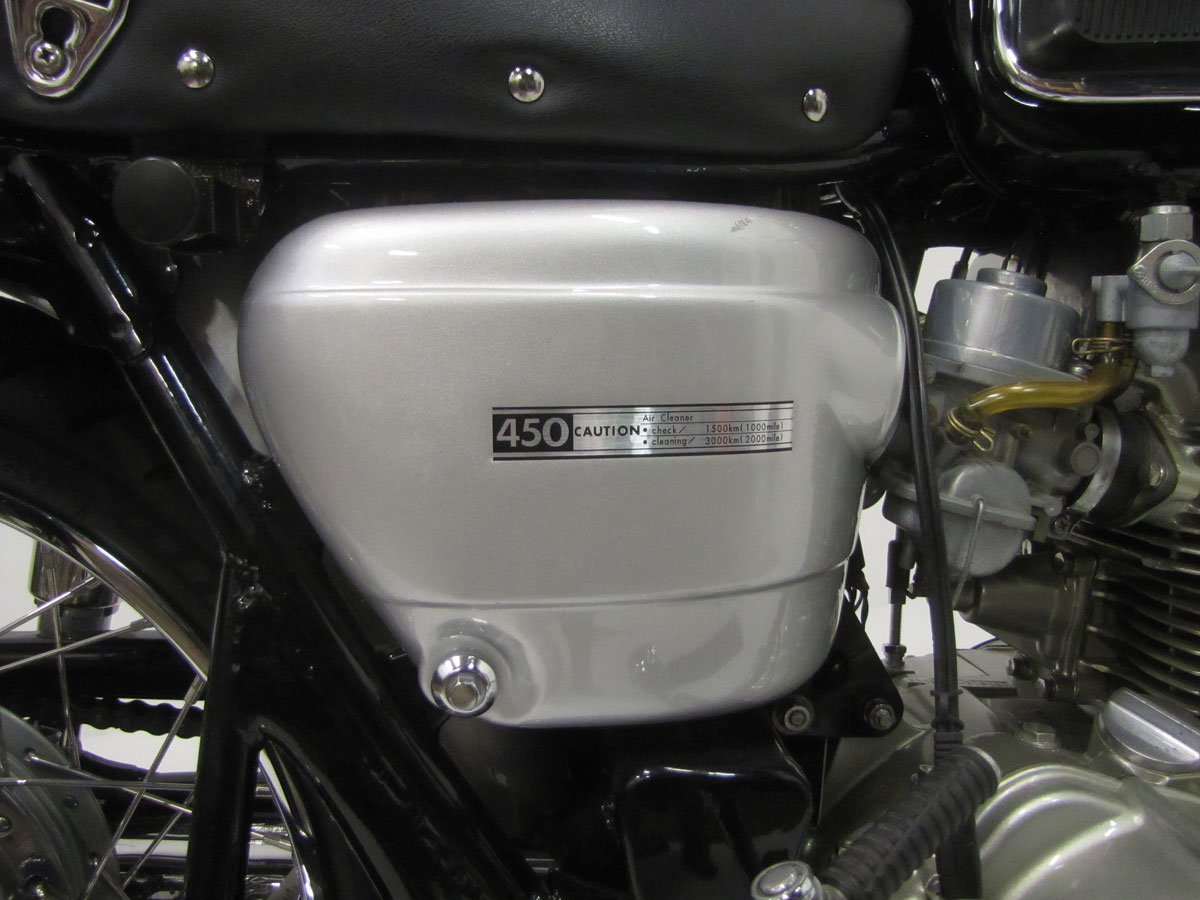
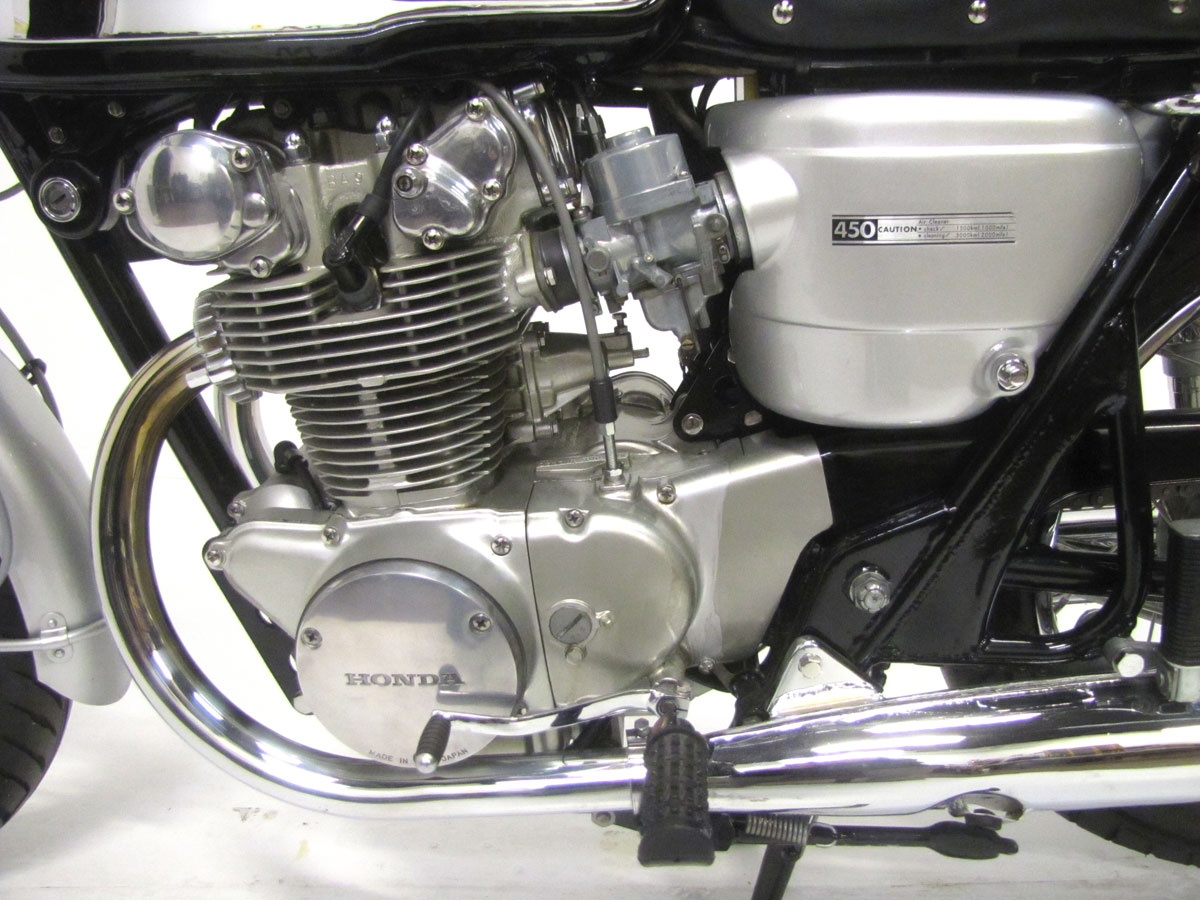
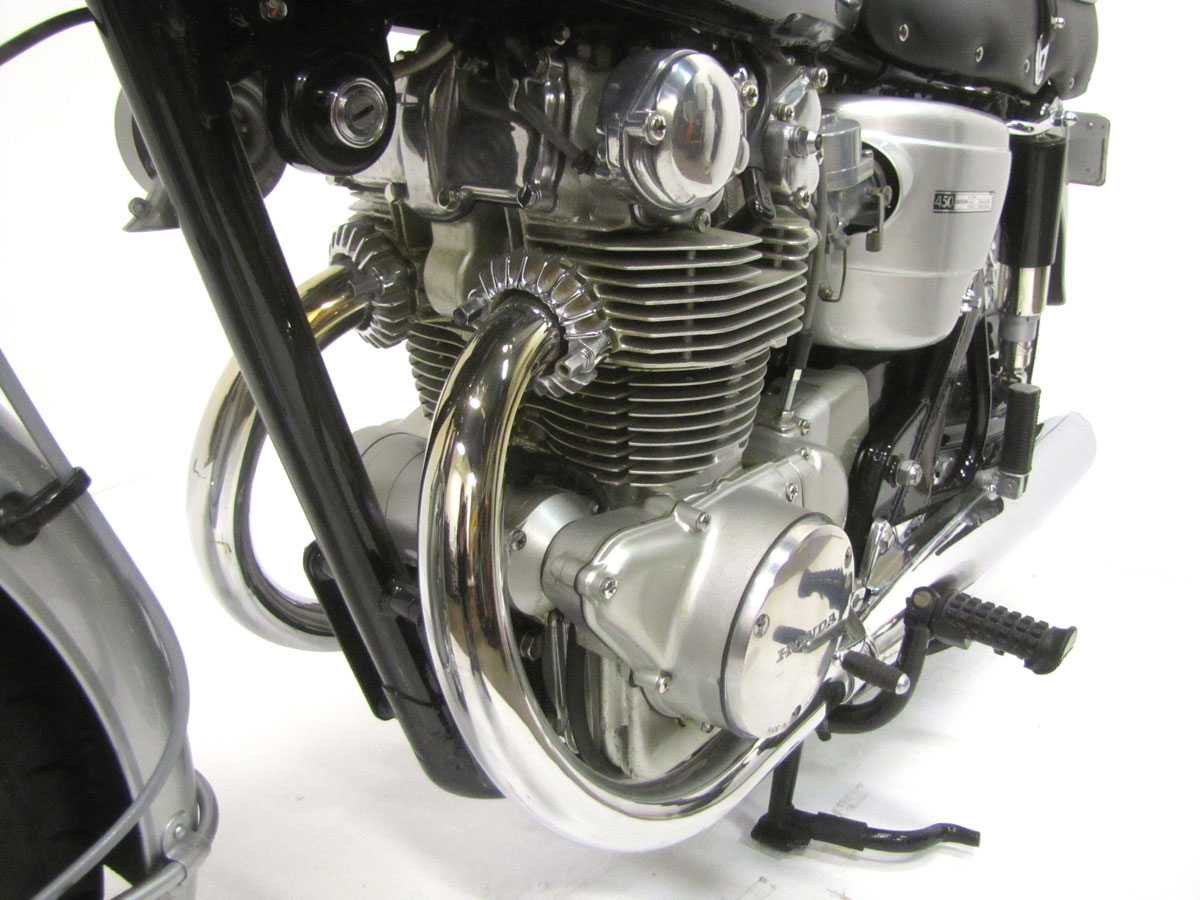
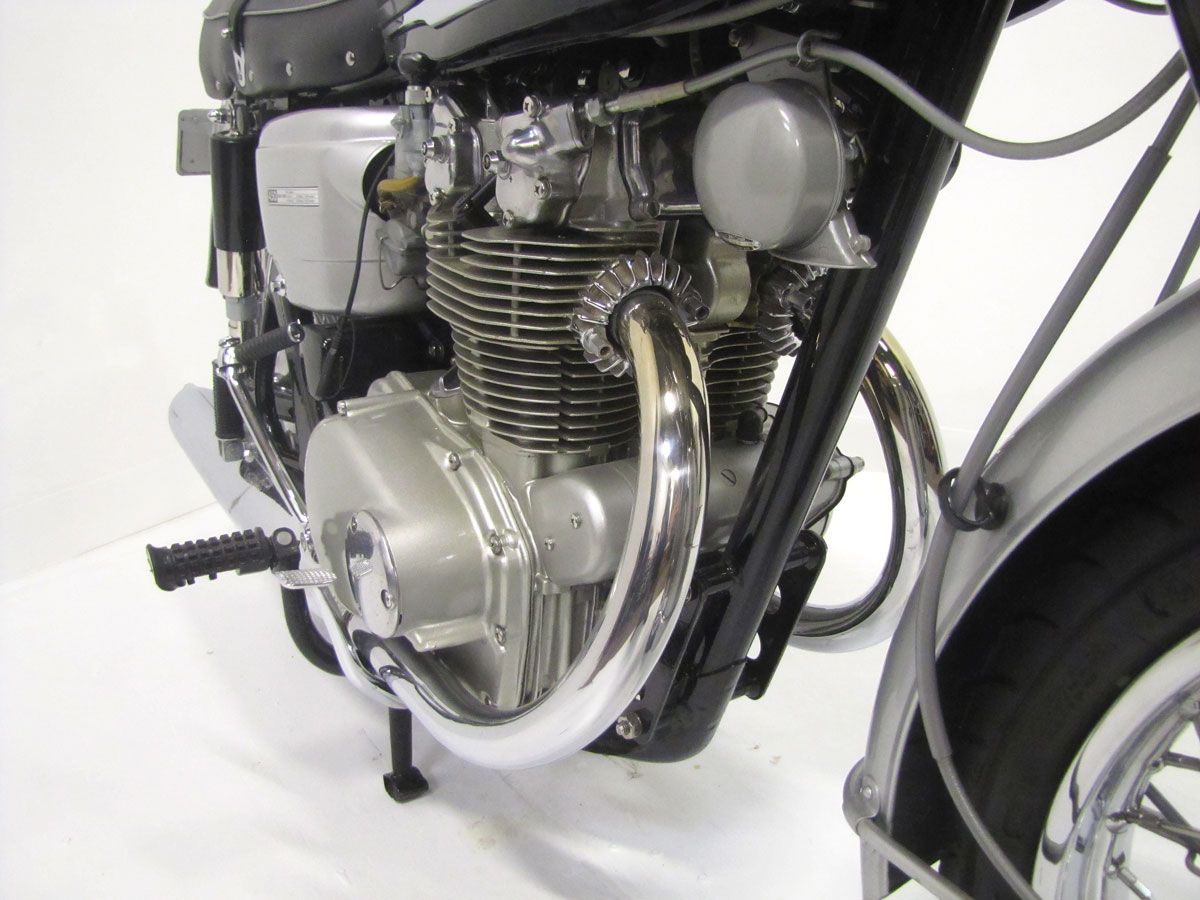
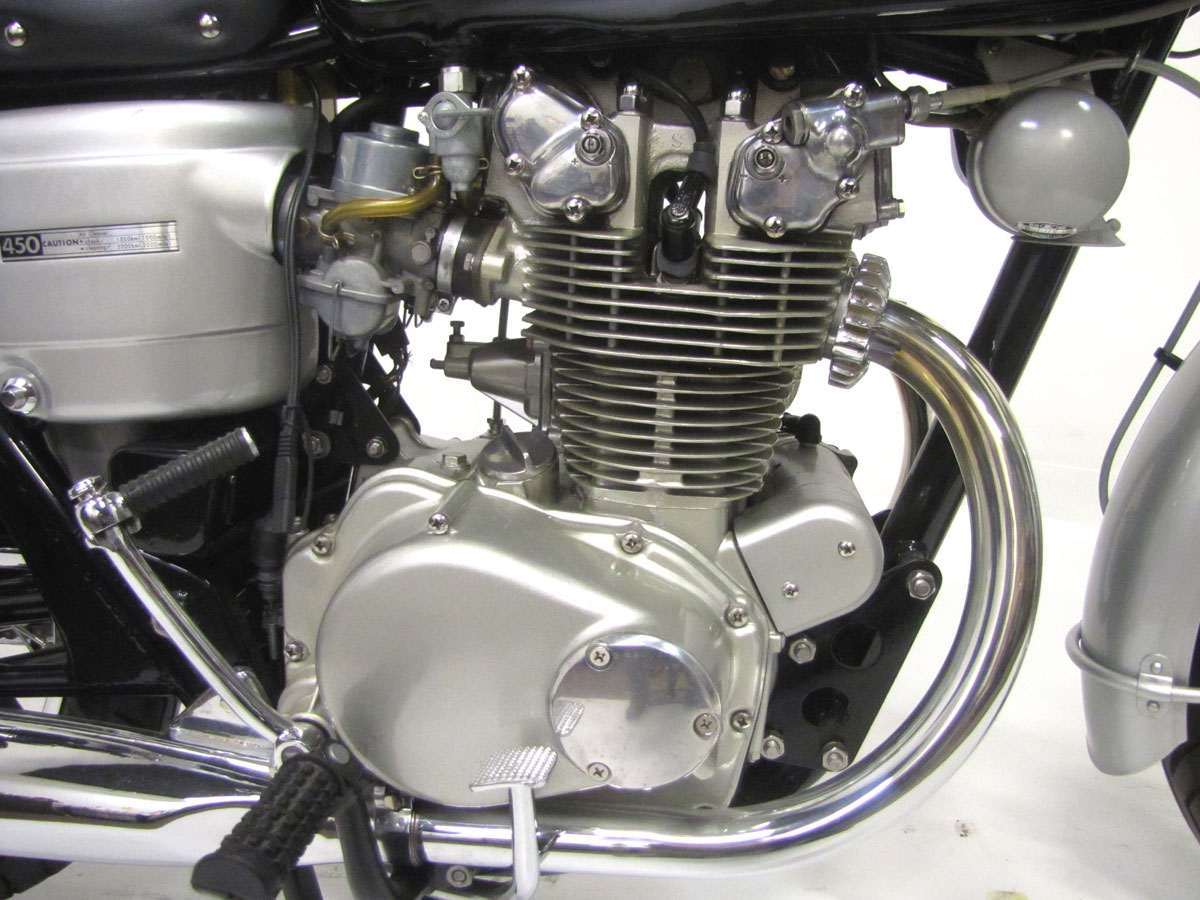


Having been involved in messing with bikes since the late 60s I was amazed how much difference there was in parts between the 4 speed and slightly later 5 speed versions of the 450. As I recall even the valve train had modifications and parts did not interchange. They were fun and relatively affordable bikes.
In between my 1971 CB100 and 1975 Z-1B I owned a 1973 CB450 for about 13k miles. Scary bike to ride, when the portion of the frame supporting the foot peg touched down the rear wheel lifted off the road and you could slide sideways a lane. This happened when leaned over quite modesty. Vibration rendered the mirrors useless at most speeds, and the only way that bike would see 110mph is if you pushed it off a cliff. Several friends had same bike, none could get it to the ton. While it was 100% reliable, it isn’t one of the bikes in my past I have fond memories of, I was happy the day I sold it.